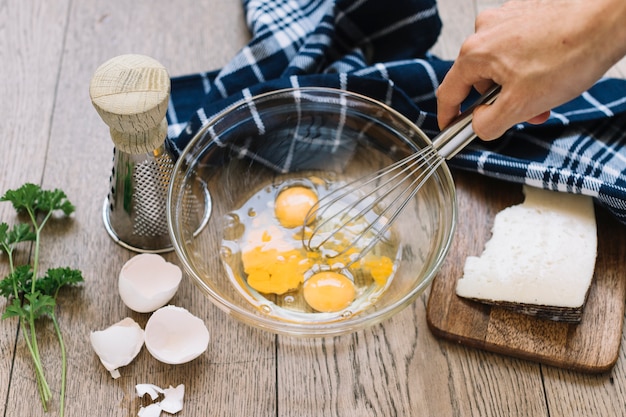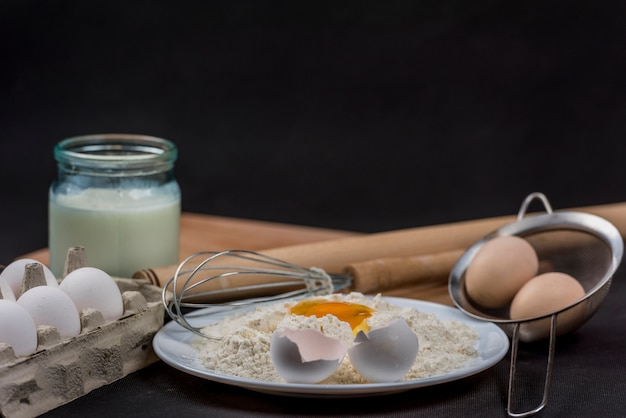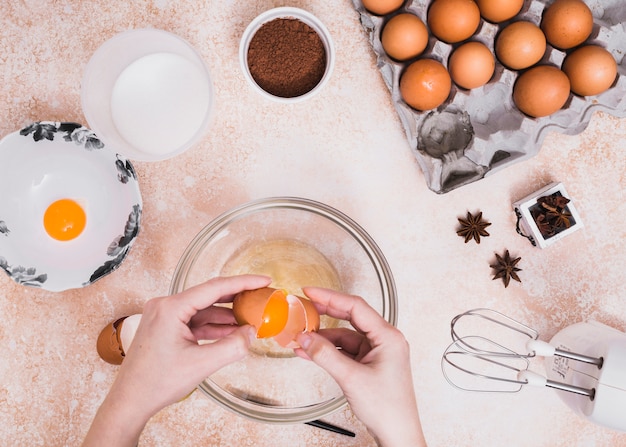Ah, the soft-boiled egg. A simple delight that holds the power to elevate a breakfast, transform a brunch, or even add a touch of elegance to a simple supper. But achieving that perfect balance – a tender, pillowy white surrounding a luscious, runny yolk – can be a culinary tightrope walk. You see, I've been on this quest for the perfect soft-boiled egg for years, ever since my granny, bless her soul, introduced me to the magic of a perfectly cooked egg. She could whip up a breakfast of soft-boiled eggs with a simple flick of the wrist, and her secret? A sixth sense for knowing exactly when to pull those eggs from the boiling water.
But, as any seasoned cook will tell you, the journey to culinary perfection isn't always a smooth one. I've spent hours poring over cookbooks, watching YouTube tutorials, and even consulted with chefs, trying different methods, timings, and temperatures. I've experimented with timers, thermometers, and even those fancy egg-cooking gadgets, all in the pursuit of that elusive perfect soft-boiled egg. And then, one day, while browsing a dusty old cookbook from my grandmother's collection, I stumbled upon a simple technique. It was so simple, so obvious, that I wondered why I hadn’t thought of it before. And that’s what I’m going to share with you today.
(Part 1) The Key to Perfection: Understanding Your Eggs

You can't expect a flawless soft-boiled egg without understanding the nuances of the egg itself. It’s not simply a white sphere; it's a living thing, a product of nature, with a history and a personality of its own. The age of the egg, the breed of the hen, the type of feed she's been given – it all plays a role.
1.1 Age Matters: Fresh is Best
You know that saying, "fresh is best?" Well, it’s especially true for eggs. Fresher eggs have a tighter yolk, which means they’re more likely to stay firm during cooking. The older the egg, the looser the yolk becomes, prone to spreading and becoming runny – not exactly what you're aiming for in a soft-boiled egg.
So how do you know if your egg is fresh? You can try the float test: place the egg in a bowl of water. If it sinks to the bottom, it’s fresh. If it floats, it means there’s a big air pocket inside, which indicates it’s older. Or, you can look at the date stamp on the carton. The fresher the egg, the closer the date will be to today. The difference in texture and flavour between a fresh egg and an older one is truly remarkable, so don't take a chance, always choose the freshest you can find.
1.2 Breed Matters: Consider the Hen
Did you know that different breeds of hens lay different types of eggs? While the colour of the shell doesn't necessarily indicate flavour or nutritional value – it’s simply a matter of breed – it can be a good indication of the yolk’s intensity. For example, brown eggs are typically from hens that lay larger eggs with a more intense yolk colour.
If you're seeking eggs with a richer, deeper orange yolk, consider breeds like Rhode Island Reds or Plymouth Rocks. They're known for laying eggs with a vibrant, almost jewel-toned yolk. But if you're just looking for a good, all-around egg, then any breed will do. The most important factor is to ensure the eggs are fresh and from a reputable source, ensuring the hens have been raised in humane conditions and fed a healthy diet.
(Part 2) The Art of Cooking: Mastering the Time

Now that you’ve chosen your perfect eggs, it’s time to dive into the art of cooking them. This is where the magic happens, where you transform those humble eggs into a culinary delight. It's a delicate process, one that requires precision and patience. But trust me, the results are worth it.
2.1 The "Goldilocks" Approach: Finding the Right Time
The secret to the perfect soft-boiled egg lies in finding the "just right" cooking time. It’s like the old story of Goldilocks and the Three Bears: you need to find the time that's neither too short nor too long, that will give you the perfect balance of a firm white and a runny yolk.
Here’s a simple guide to help you get started:
| Cooking Time (minutes) | Yolk Consistency |
|---|---|
| 3-4 | Very runny, almost liquid |
| 4-5 | Runny but starting to set, ideal for a creamy texture |
| 5-6 | Soft and creamy, with a slight jiggle, a popular choice for many |
| 6-7 | Firm but still slightly runny, a good option if you prefer a more set yolk |
| 7-8 | Firm and set, but still slightly soft, bordering on a hard-boiled egg |
These are just general guidelines. The ideal cooking time will vary depending on the size of your eggs and your personal preference. And remember, it’s always better to err on the side of undercooking rather than overcooking. An undercooked egg can always be cooked a little longer, but an overcooked egg is a lost cause.
2.2 The Power of Cold Water: Starting Right
Believe it or not, starting your eggs in cold water is crucial. This allows the eggs to cook evenly, preventing the whites from becoming rubbery and the yolk from overcooking. If you start with hot water, the outside of the egg will cook too quickly, while the inside remains raw. It's a recipe for a less than desirable texture and a disappointment for your taste buds.
So, take your chosen eggs and place them gently into a pot filled with cold water. Make sure the water covers the eggs by at least an inch, allowing them to cook evenly.
2.3 Bringing it to a Boil: The Gentle Rise
Now, it’s time to bring the water to a boil. But don’t let it go wild! A gentle boil is key. Once the water starts to bubble, keep the heat low to maintain a gentle simmer. Think of it like a soft whisper rather than a roar. This gentle simmer will ensure the eggs cook evenly without cracking or becoming rubbery.
2.4 The Clock is Ticking: Time for Precision
This is the moment of truth. Start your timer and let the clock tick away. Remember those cooking times we talked about earlier? Use those as your guide, adjusting based on your desired level of doneness. As the timer winds down, keep an eye on the pot and don't let the water boil too vigorously. Once the timer goes off, it’s time to take those precious eggs out of the water.
(Part 3) The Quick Chill: Preserving the Perfection

You've done the hard part; you've cooked your eggs to perfection. But there’s one more crucial step: the quick chill. This is what helps preserve the runny yolk and prevents the egg from becoming rubbery. It's the final touch that separates a good soft-boiled egg from a truly extraordinary one.
3.1 The ice bath: A Refreshing Dip
Get yourself a bowl of ice water. Yes, you read that right, ice water! Once you’ve removed your eggs from the boiling water, immediately plunge them into the ice bath. The rapid temperature change will stop the cooking process and help retain that beautiful, creamy yolk. It’s like hitting the pause button on the cooking process, allowing you to preserve the perfect texture and flavour.
3.2 Timing is Key: A Cool Down
Let your eggs chill in the ice bath for about 5-10 minutes. This will give them enough time to cool down and prevent the yolks from overcooking. The cold water will also make the eggs easier to peel, as the shell will shrink slightly.
(Part 4) The Reveal: Unveiling the Perfect Soft-Boiled Egg
It’s time for the grand reveal. Take your eggs out of the ice bath, gently pat them dry, and prepare to be amazed.
4.1 The Peel: A Gentle Touch
Now, you need to peel your eggs. This can be a bit tricky with soft-boiled eggs, as the whites tend to be a bit more delicate. So, be gentle. Start by tapping the egg on a flat surface to crack the shell. Then, carefully peel the shell away from the egg, starting from the top and working your way down.
If you’re struggling to peel the egg, try soaking it in cold water for a few minutes. This will help loosen the shell and make it easier to peel. If you find the shell clinging to the white, resist the urge to pull hard, as this will damage the delicate egg. Instead, use a gentle rocking motion to release the shell.
4.2 The Presentation: A Culinary Masterpiece
Once you’ve peeled your eggs, it’s time to present them. I like to cut them in half and arrange them on a plate with a little bit of fresh parsley and a drizzle of olive oil. But you can get creative and serve them however you like.
Whether you’re making a classic egg salad sandwich, adding them to a bowl of soup, or simply enjoying them on their own, a perfectly soft-boiled egg is sure to make any meal feel special. It's a culinary masterpiece that speaks to the simplicity and elegance of good food.
(Part 5) The Variations: Exploring the Spectrum of Soft-Boiled Delights
Now, you might be thinking, "Okay, I’ve mastered the perfect soft-boiled egg, but what about all those other variations?" Don’t worry, I’ve got you covered. There’s a whole world of soft-boiled egg possibilities out there, and I’m about to unlock them for you.
5.1 The "Scotch Egg" Twist: A Savoury Delight
A Scotch egg is a classic British snack that’s perfect for a quick and easy lunch or dinner. It’s essentially a hard-boiled egg wrapped in sausage meat and then deep-fried. But what if we give it a soft-boiled twist?
The key to a soft-boiled Scotch egg is to use a firmer soft-boiled egg, one that has a slightly set yolk. This will help prevent the yolk from oozing out when you wrap it in the sausage meat. Wrap your soft-boiled egg in sausage meat, then coat it in breadcrumbs and deep-fry it until golden brown. You’ll have a delicious, decadent snack that’s sure to impress.
5.2 The "Deviled Egg" Delight: A Spicy Surprise
deviled eggs are a popular appetizer at parties and gatherings. They’re made by hard-boiling eggs, then mashing the yolks with mayonnaise, mustard, and other seasonings. But what if we give them a soft-boiled makeover?
The beauty of a soft-boiled deviled egg is the runny yolk. It creates a creamy, luscious texture that’s simply irresistible. Just follow the same steps as you would for a traditional deviled egg, but use soft-boiled eggs instead. You’ll be amazed at the difference in texture and flavour.
5.3 The "Egg Salad" Innovation: A Crunchy Delight
Egg salad is a classic sandwich filling that’s perfect for a quick and easy lunch. It’s typically made with hard-boiled eggs, mayonnaise, and other seasonings. But what if we give it a soft-boiled twist?
A soft-boiled egg salad is all about that creamy, runny yolk. It adds a whole new dimension of texture and flavour to the traditional recipe. Just follow the same steps as you would for a traditional egg salad, but use soft-boiled eggs instead. You can also add other ingredients, such as chopped celery, onion, or parsley, to give your egg salad some extra crunch.
(Part 6) The Eggcellent Accessories: Elevate Your Soft-Boiled Experience
Now, you might be thinking, "Okay, I’ve mastered the art of cooking the perfect soft-boiled egg, but what about all those extra touches that can make it even better?" Well, I’m happy to say that there’s a whole world of eggcellent accessories out there that can elevate your soft-boiled experience to new heights.
6.1 The Egg Cup: A Stylish Stand
An egg cup is a must-have for any soft-boiled egg enthusiast. It’s a simple, elegant way to present your eggs and keep them from rolling around on your plate.
There are all sorts of egg cups available, from classic ceramic designs to modern stainless steel ones. You can even find egg cups with cute animal shapes or quirky designs, adding a touch of whimsy to your breakfast table.
6.2 The Egg Spoon: A Perfect Tool
A good egg spoon is essential for scooping up the yolk and white of a soft-boiled egg without making a mess. It’s usually made from stainless steel and has a rounded end that’s perfect for gently scooping up the egg. It's an elegant and practical tool that will make enjoying your soft-boiled egg a more refined experience.
6.3 The egg timer: A Time-Saving Gadget
An egg timer is a handy gadget for ensuring that your soft-boiled eggs are cooked to perfection. There are all sorts of egg timers available, from traditional hourglass timers to digital ones with countdown features. The right egg timer can be your culinary companion, taking the guesswork out of the process and ensuring your eggs are cooked just right every time.
(Part 7) The FAQs: Addressing Your Soft-Boiled Queries
You’ve got questions, I’ve got answers. Here are some common questions about soft-boiled eggs that I get asked all the time.
7.1 How Can I Tell If My Eggs Are Overcooked?
If you’re worried about overcooking your eggs, there are a few ways to tell. First, check the yolk. If it’s completely solid and firm, then you’ve probably overcooked it. Second, check the white. If it’s rubbery and tough, then you’ve probably overcooked it. A well-cooked soft-boiled egg will have a tender white and a soft, creamy yolk that is still slightly runny.
7.2 How Long Should I Let the Eggs Cool Down After Cooking?
It’s best to let your eggs cool down in an ice bath for about 5-10 minutes. This will help prevent the yolks from overcooking and will also make them easier to peel. The ice bath stops the cooking process and helps retain the perfect texture of the yolk.
7.3 Can I Store Soft-Boiled Eggs in the Fridge?
Yes, you can store soft-boiled eggs in the fridge, but they will start to lose their freshness over time. It’s best to eat them within a few days. The texture and flavour will deteriorate over time, so enjoy them fresh for the best experience.
7.4 What If My Yolk Is Too Runny?
If you find that your yolk is too runny, there are a few things you can do. First, try cooking your eggs for a little longer next time. Second, try using older eggs, as they tend to have a looser yolk. But remember, the runny yolk is part of the charm of a soft-boiled egg! If you prefer a more set yolk, aim for a longer cooking time.
7.5 What Happens If I Don't Chill My Eggs After Cooking?
If you don’t chill your eggs after cooking, they will continue to cook, and the yolks will become overcooked. This will make them less tasty and more difficult to peel. The quick chill is a crucial step that ensures the perfect texture and flavour of your soft-boiled egg.
(Part 8) The Final Verdict: Embrace the Soft-Boiled Egg
So there you have it, my friends. The secrets to cooking the perfect soft-boiled egg. It’s a simple yet rewarding culinary journey that will leave you feeling utterly satisfied. From choosing the right eggs to mastering the cooking time, and from chilling them in an ice bath to embracing those eggcellent accessories, there’s a whole world of soft-boiled egg possibilities to explore.
So, embrace the soft-boiled egg. Embrace its runny yolk, its creamy texture, and its versatility. Embrace the culinary joy it brings to your life. And remember, the only thing better than a perfectly soft-boiled egg is another perfectly soft-boiled egg.
Everyone is watching

Corn on the Cob: The Ultimate Guide to Perfectly Cooked Ears
Healthy MealsAh, corn on the cob. Just the name evokes images of sunny days, barbecues, and that sweet, juicy flavour that ...

Scallops: The Ultimate Guide to Perfect Cooking
Healthy MealsAh, scallops. Those delicate, sweet, and utterly delicious morsels of the sea. They hold a special place in my...

Spaghetti Squash: The Ultimate Guide to Cooking and Serving
Healthy MealsRemember that time you saw spaghetti squash at the supermarket, looking all bumpy and strange, and thought, "W...

Salmon Cooking Times: Perfect Guide for Every Recipe
Healthy MealsLet me tell you, cooking salmon is an art form. It's all about getting that perfect balance: juicy and tender,...

Ham Cooking Time: How Long to Bake, Smoke, or Boil a Delicious Ham
Healthy MealsAh, ham. It's a classic, isn't it? A real crowd-pleaser, especially around holidays. And when done right, it'...
